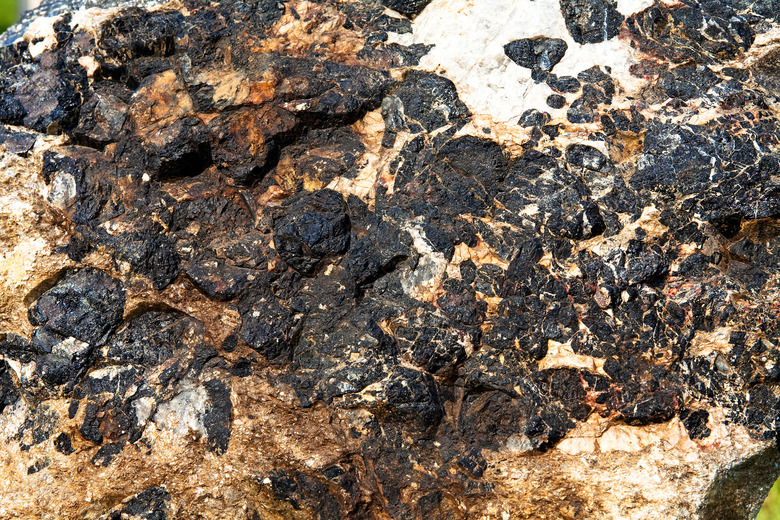The Difference Between Metaconglomerate & Conglomerate
Conglomerate and metaconglomerate rock begin as particles of rock and sand collected in the sediment of streams, rivers or oceans. Conglomerate rock is a type of sedimentary rock that can become metaconglomerate rock through geological events, such as tectonic plate collision or subduction. Conglomerate and metaconglomerate differ in formation and physical characteristics.
Composition
Composition
Both conglomerate rock and metaconglomerate rock contain the same components, although the metamorphism process can elongate or deform the original rocks. Rock with a high amount of silica and silicates that is made of preexisting rock material is referred to as siliciclastic. Conglomerate rock is a mix of large and small grains and is siliciclastic sedimentary rock. It is also comprised of small rock pieces held together by a fine-grained matrix. Metaconglomerate rock is made of the same components, but has undergone one or more various types of metamorphism.
Formation
Formation
Conglomerate rock is formed by the solidification of loose sediment, which can happen through compaction, cementation and dewatering. As sediment accumulates, its weight compacts the layers beneath it and the pressure cements rock particles that were deposited in the sediment. Siliciclastic rock forms when sediments are derived from the erosion of previously existing rocks. This type of rock is often formed in rivers, streams or shallow marine environments, which effectively erode the small rock pieces into rounded pebbles. Conglomerate rock is formed in this method before it can become metaconglomerate rock.
Metamorphism
Metamorphism
Metamorphic changes in rock can occur because of pressure, heat or chemical fluids. At depths of 5 to 40 kilometers, regional metamorphism is caused by an increase of pressure and temperature. Contact metamorphism occurs when lava or magma comes in contact with other rocks. Conglomerate rock is changed to metaconglomerate through contact or regional metamorphic processes. During these processes, there are changes in the texture and mineralogy of rock through compaction and recrystallization. Metamorphism increases the density of the original conglomerate rock by compacting the grains, and can also change the color with mineral interaction.
Characteristics
Characteristics
Conglomerate rock is characterized by the presence of rounded pebbles, cobbles or boulders that are surrounded by a matrix. The matrix is comprised of sand or silt and cements the rock together. Conglomerate rock is made of pebbles rounded by erosion; if the rock contains angular pieces, then it is called a breccia. In metaconglomerate rock, the original pebbles may be stretched or flattened. The metamorphic rock is denser and cannot be easily broken.
References
Cite This Article
MLA
Land, Mitchell. "The Difference Between Metaconglomerate & Conglomerate" sciencing.com, https://www.sciencing.com/difference-between-metaconglomerate-conglomerate-8365887/. 6 May 2011.
APA
Land, Mitchell. (2011, May 6). The Difference Between Metaconglomerate & Conglomerate. sciencing.com. Retrieved from https://www.sciencing.com/difference-between-metaconglomerate-conglomerate-8365887/
Chicago
Land, Mitchell. The Difference Between Metaconglomerate & Conglomerate last modified March 24, 2022. https://www.sciencing.com/difference-between-metaconglomerate-conglomerate-8365887/
